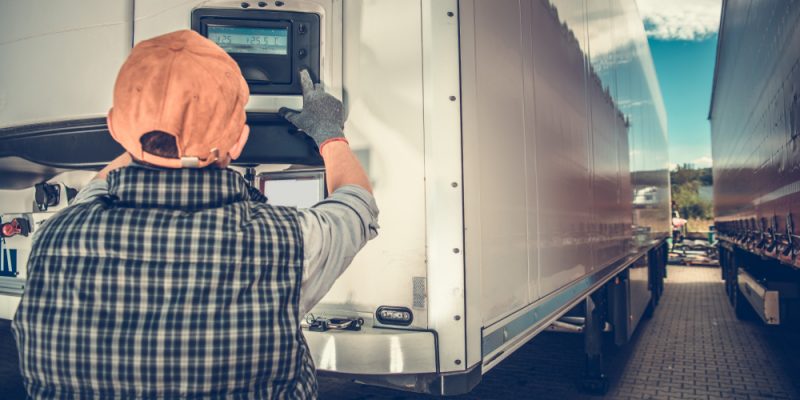Refrigerated Transport – 5 Best Practices
Here at Cannon Logistics, we pride ourselves with knowing and following the best practices when it comes to refrigerated logistics.
At the core of the food industry, are standards for food safety and the safe transportation of food. And in this article, we discuss 5 best practices in refrigerated transport.
1. Maintain Precise Temperature Control During Refrigerated Transport
If you have a fleet or are hiring one, you can ensure product quality and negate potential losses from any temperature variations.
To improve airflow within the trailer/s install door switches. The best practice is to turn off the trailers before opening doors to load cargo; where we find that hot air could easily be pulled into the trailer if the unit is running when trailer doors are open.
Trailers with door switches will automatically turn the unit off when the driver opens the doors which leave the integrity of the cargo throughout the loading and unloading process.
Products shouldn’t be stacked outside the trailer before being placed on a trolley and moved.
2. Stimulate Airflow and Circulation
Secondly, the aim is to stimulate airflow and circulation. Consistent airflow and circulation from the front of the trailers help maintain appropriate throughout the trailer.
It’s knowing the most effective loading configurations that stimulate airflow and circulation. For example, placing palletised products away from the walls and doors, air can flow freely around the load. The air acts as an insulator to protect pallets from hot or cold conditions outside the trailer and maintain the set of temperatures inside.
3. Recognise the impact of “Off time” in Start/Stop Operation
Generally, you need to recognise the effect of “Off time” in start/stop operation. For example, when transporting frozen products because frozen cargo isn’t as sensitive to temperature variations. However, with temperature-sensitive fresh products, temperature variations from the front to the back can be significant. Even the smallest of changes in the restart temperature could mean drastic fluctuations in the actual trailer temperature, leading to cargo degradation and shorter shelf life.
4. Achieve Quality Assurance with Telematics
Telematics can help achieve quality assurance by automating sensors and alarms to notify drivers and fleet managers of potential problem/s before spillage occurs.
Real-time remote monitoring mitigates potential issues like compromised load integrity or disrupted delivery schedules before they occur. If the trailer/s doesn’t have real-time telematics devices installed, the security of the trailer and yard personnel should check its contents until the trailer is dispatched.
5. Staging Loaded Trailer Back On to the Yard
The staging process allows for the trailer to re-stabilize the internal trailer temperature prior to the delivery process.
Stabilising compartmental temperatures in the trailer helps to defer the loss of product temperature that may occur during the delivery process. The staging process also ensures security measures are in place to protect the load. These include where you must verify the loaded trailer/s, verify the refrigeration unit status (what temperature/s); secure the trailer and then move the trailer to the staging area/final destination for delivery.
Next time you need to transport products, look to the experts at Cannon Logistics, we’ll work out a freight solution to suit your specific needs. Contact us now.
